Industry and governments are turning to technology to help locate and retrieve abandoned, lost or discarded fishing gear
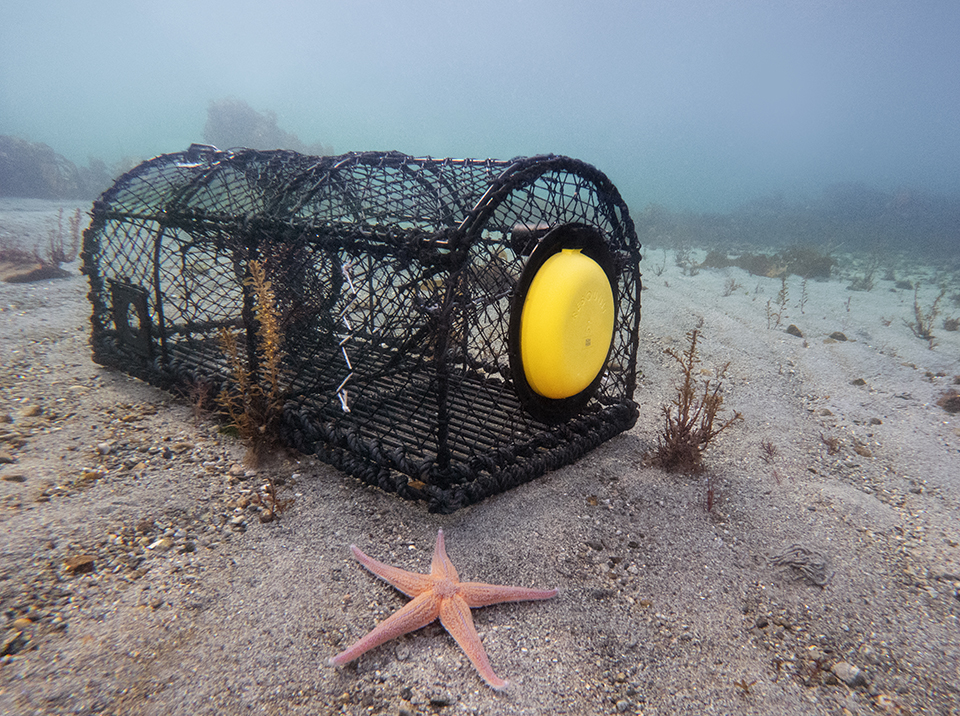
From black solider fly start-ups to blockchain, technology solutions continue to come along for complex seafood issues. Governments and industry leaders alike are turning to technology to remedy another tough problem with a negative global impact: ghost fishing by abandoned, lost or discarded fishing gear (ALDFG).
With an estimated 5 to 30 percent decline of some fish populations from ghost fishing and lost harvest values reaching millions of dollars, ALDFG can jeopardize the livelihood of fishers and the accuracy of the fish population assessments used by fisheries managers to regulate catches. Globally, ALDFG is capturing species with high commercial value, leading to stock reductions, and is causing harm to important marine habitats.
Case in point: the annual replacement of lost gear costs just one crab fishery in British Columbia, Canada nearly (U.S.) $500,000, according to the Global Ghost Gear Initiative (GGGI) at Ocean Conservancy. Drifting ghost gear also damages propellers of shipping and transport vessels.
Tallying up the economic and environmental costs of ALDFG, government and industry alike are using technology to locate and recover lost fishing gear. From underwater robots to floating cages, these innovations could help mitigate the global ghost gear threat.
The hidden cost of ghost gear lost by fishing and aquaculture
There’s an app for that
A marine scientist for 20 years, Dr. Christine Ward-Page fell into app development, motivated to modernize “very siloed” and “out-of-date” ocean monitoring and reporting systems. In finding a fix, she launched eOceans – a platform for collaborative, real-time, and multi-dimensional ocean tracking, including ALDFG.
“eOceans can help with many aspects of ghost gear,” said Ward-Page. “First, allowing fishers to quickly log when it’s been lost – where, when and what – so it can be retrieved. Second, it allows anyone that finds gear to report it – this helps with understanding hotspots, for example. Third, when we map lost and found gear with marine animals and oceanographic conditions, then we can prioritize mitigation and clean-up efforts that match the local needs.”
Nets for Net Zero, a Canadian non-profit working to clear ghost fishing gear from the ocean and “upcycle” it, has partnered with eOceans to test drive the app. Once their community members log lost or found gear, eOceans then analyzes and maps the data to understand how they can optimize their supply chain.
“This not only helps the ocean but can also give fishers the opportunity to recoup some of their gear costs while also turning the gear into new products – win-win-win,” said Ward-Page.
Another app making waves is the Fishing Gear Reporting System (FGRS) – an app developed by the Canadian government for commercial harvesters to report lost gear from any online device. It was launched in July 2021 by the Department of Fisheries and Oceans (DFO) through the Ghost Gear Fund, a targeted funding envelope to combat lost and abandoned fishing gear.
“The FGRS is an easier way for harvesters to report their lost gear,” said Marina Petrovic, the ghost gear program lead at DFO and a GGGI expert advisory committee member. “When they lose their gear, they just open the app, enter the gear description and location and hit submit. The app also allows harvesters to quickly and easily report any of their own gear that they subsequently relocate.”
Since 2019, all commercial harvesters in Canada are required to report their lost fishing gear to Fisheries and Oceans Canada (DFO) and the app has simplified the process.
“Before the app was launched, harvesters had to complete a Lost Fishing Gear Form and send it to DFO via email or print the form and send it by mail,” said Petrovic. “This new reporting system will help DFO generate more timely and accurate gear-loss data. This data will guide more effective retrieval efforts, in high-priority areas, which will lead to the recovery and return of more lost gear to original owners.”
Ultimately, the app could help DFO and its partners locate and remove lost gear from the ocean, and in many cases, return it to its owner.
“To my knowledge, it is the first of its kind where a government has created a convenient online portal for fishers to be able to report lost gear,” said Joel Baziuk, associate director at GGGI. “It’s a no-fault reporting system, which is crucial to understand – because no fisher wants to lose their stuff. It doesn’t make sense to punish them for losing their gear in bad weather or a storm or a snag or somebody drives over it and cuts it loose. This is about just reporting it for data collection purposes, and hopefully, for recovery efforts in the future. It’s a really progressive step forward.”
‘A one-stop shop’
GGGI has also developed a Ghost Gear Reporter app, which can be downloaded from the Google Play and Apple App stores worldwide. Anyone can use it and the app allows for as much or as little data on hand to be uploaded, including photographs and geo-locations of the gear. While it may not necessarily lead directly to immediate retrieval, all data gets fed into the GGGI global data portal, helping to establish a global baseline of data on ghost gear around the world.
“We can take these disparate data sets from different data-contributing organizations and put them all in one place,” said Baziuk. “Then, display that data on a map.”
Baziuk said that “version 2.0” is launching in 2022, which will allow people “to interact with the data.” The GGGI has built data-sharing agreements into the platform so that any topline data will be publicly available for analysis – a feature that may appeal to researchers or governments seeking a snapshot of the situation.
“Portal users will be able to download those data, interact with them, filter them, select a region just by drawing a polygon on a map and pull out all the records from there subject to the level of shareability specified by the data contributor,” said Baziuk. “Then download all of that or filter it by gear type, when it was lost, date range, or whether it’s been recovered. So, all these different tools will be made available to anyone who wants to create an account and then use it.”
“It’s designed to be the one-stop-shop for all ghost gear-related data around the world.”
Nonetheless, reporting apps have limitations. With data gaps and inconsistent reporting, the tool cannot definitively pinpoint all the “hotspots” worldwide. For instance, is there just more active reporting in certain regions?
“There are areas of the world where we know there’s a lot of gear being lost anecdotally, but we don’t have the firm data for it,” said Baziuk. “You might see the coast of West Africa, as an example, with not a lot of data records (if any). It doesn’t mean gear is not being lost there.”
“There’s a tremendous amount of more work that needs to be done before we’re actually flushing this out into what we could reasonably call an estimate of gear loss.”
Robo-retrieval
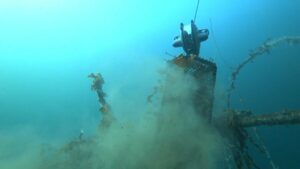
Other innovations are helping to get ALDFG out of the water. Canada-based Deep Trekker manufactures underwater remotely operated vehicles (ROVs) that can be used for gear loss retrieval. Using the controller from the topside, operators can search areas for lost gear with the ROV’s HD camera, LED floodlights and even sonar. Once located, the ROV can be used to cut nets and physically pull debris out of the water using the attached grabber arm.
“Part of the challenge in communicating about ghost fishing gear is that it is tough to visualize,” said Sam Macdonald, Deep Trekker’s president. “Deep Trekker ROVs allow users to take photos and videos during missions, providing viewers with a firsthand look at the catastrophic impact of ghost fishing gear.”
There are some limitations – some nets may be too heavy for the vehicles to physically pull up to the surface and may require a tool that slices the nets into smaller pieces – and the device isn’t cheap. The basic model starts at approximately (U.S.) $6,000, but this increases with the model and add-ons (such as sonar or other positioning systems). But the one-time cost could be worth it for some.
“Return on investment is most obvious in terms of the time required to retrieve ghost gear,” said Macdonald. “An ROV only requires a single operator and the battery-powered vehicles can be easily transported and deployed into the water at a moment’s notice.”
Macdonald said that the use of ROVs is gaining traction: Both the Ghost Diving Global Mission and Norway-based ROVpartner have used Deep Trekker ROVs to remediate ghost gear. And it offers safety benefits, too.
“Utilizing an ROV allows ghost diving teams to locate ghost fishing gear and retrieve that gear from dangerous locations quickly and cost-effectively without putting divers into treacherous conditions,” said Macdonald. “[It] also allows teams to get eyes underwater before divers enter the ocean to ensure that if divers are retrieving gear they are doing so under safe conditions.”
Answering the call
On the other side of the Atlantic, the NetTag project – a collaborative European initiative to develop new technology to locate and recover lost fishing gear – has created a miniature acoustic transponder (or tag) that can be attached to fishing nets and other gear. The device can pick up and automatically respond to an incoming signal, allowing fishermen to accurately pinpoint lost gear from a search vessel using a locator unit onboard.
“Usually, the fishermen have a rough idea where they lost their net, within a few kilometers,” said Dr. Jeff Neasham, Newcastle University lead for the project. “So, you do an initial search where you transmit that interrogation message until you get an initial contact. That could be within a radius of up to two kilometers [1.24 miles] from the tag.”
Unlike other acoustic devices that ping periodically, the tag sits quietly until it receives an interrogation signal from the locator unit onboard the vessel. This practically eliminates noise pollution in the ocean, but also preserves the battery’s life.
“This tag sits there listening,” said Neasham. “This device will only reply when it hears that interrogation signal. Once you establish that contact and send a signal in both directions, then you can measure a range.”
Neasham said that the search process usually takes 10 to 15 minutes from start to finish – a huge time-saver compared to possibly hours of random searching – and involves taking three ranges from different positions within a two-kilometer radius. And the positioning accuracy is better than five meters horizontally.
“The exact positions for ranging aren’t that important,” he said. “Just move a few hundred meters one way, maybe turn 90 degrees and move a few hundred meters the other way. And then you can calculate an initial fix on where the tag is.”
The tag was trialed with fishermen in Portugal, who were able to accurately find a tag without any input from the team. It’s “full steam ahead” with the product development, but keeping costs low for fishermen is a priority.
“An investment of the order of $200 attached to an asset that’s worth a few thousand dollars starts to become attractive and viable if it gives you a good chance of recovering that asset when it’s lost,” said Neasham.
From apps to traps
Another retrieval innovation is Resqunit – a Norwegian company that’s developed a flotation device fastened to fishing gear, such as lobster traps, crab pots or any cage used for fishing. If a cage is lost in the water for an extended period, the reserve buoy releases once the cotton twine is dissolved. The buoy, which is connected to the trap using a strong rope, floats to the surface, allowing the lost gear to be retrieved.
“The gear can be hauled using the rope,” said Per Waagen, Resqunit’s co-founder and CMO. “The strength of the rope is approximately 100 kg [220 pounds], but if the gear is heavier, the rope can be used as a guideline for a hook or similar device to grab the gear on the seafloor.”
The Resqunit device also remedies the “self-baiting cycle” of ALDFG – whereby creatures get trapped and die in the lost trap and continue attracting scavengers that also become trapped. When the reserve buoy is mounted to the trap, there’s the option to cut a hole in the cage, covered by the buoy. When the buoy is eventually released, the hole opens and creates an escape hatch for trapped critters.
“By letting the animals escape from lost fishing gear, we are preserving the animal stock,” said Waagen. “Organizations like GGGI have helped us a lot in understanding how huge this problem is, and as we are Norwegians, we do know that our lobster stock has decreased significantly in the last 50 years. We’re afraid this is partially a result of ghost fishing.”
The company sold 15,000 units in its first year, mostly to recreational fishermen in Norway. From there, they launched pilot projects around the world, aiming to tweak the product to suit regional needs, as well as make the device more robust, predictable and suitable for commercial industries.
“Some places, fishing operates on depths 25 to 50 meters, other places 150 to 300 meters, so we want to be able to customize as best as possible,” said Waagen. “A fishery in one region may be totally different in another region.”
Rethinking ropes: Can ropeless fishing gear end whale entanglements?
‘With fishers and for fishers’
There are countless other technologies in the works that could help with the ghost gear problem. Smelts has developed a ropeless, acoustic “lobster raft” with inflatable lift bag technology and an acoustic pinger. Blue Ocean Gear of California has created “smart buoys” that track and monitor all types of deployed gear and report its location to a mobile phone or website.
Likewise, Ashored Innovations is building its first commercial run of Modular Ocean-Based Instrument (MOBI) – a submersible, geo-trackable buoy that descends with the lobster trawl and utilizes acoustic release technology to return to the surface. While Baziuk is excited about the possibilities, he said that success hinges on including one “critical” design element: partnerships with fishers.
“It’s really important that these technologies are developed with fishers and for fishers,” said Baziuk. “Because you can have the greatest technology in the world, but if it isn’t practical to use onboard a fishing vessel, then it’s going be of very limited applicability.”
Follow the Advocate on Twitter @GSA_Advocate
Now that you've reached the end of the article ...
… please consider supporting GSA’s mission to advance responsible seafood practices through education, advocacy and third-party assurances. The Advocate aims to document the evolution of responsible seafood practices and share the expansive knowledge of our vast network of contributors.
By becoming a Global Seafood Alliance member, you’re ensuring that all of the pre-competitive work we do through member benefits, resources and events can continue. Individual membership costs just $50 a year.
Not a GSA member? Join us.
Author
-

Lisa Jackson
Associate Editor Lisa Jackson lives in Hamilton, Ontario, Canada. Her work has been featured in Al Jazeera News, The Globe & Mail, The Independent, and The Toronto Star.
Tagged With
Related Posts
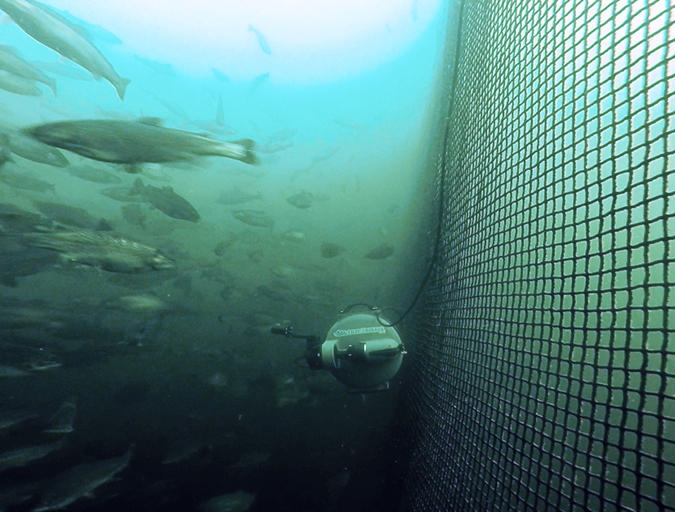
Innovation & Investment
Rise of the machines: Aquaculture’s robotic revolution
Technological advances are revolutionizing aquaculture. From airborne inspection tools to underwater drones, innovative robotics and automation technology are unveiling a brave new world of futuristic farming.
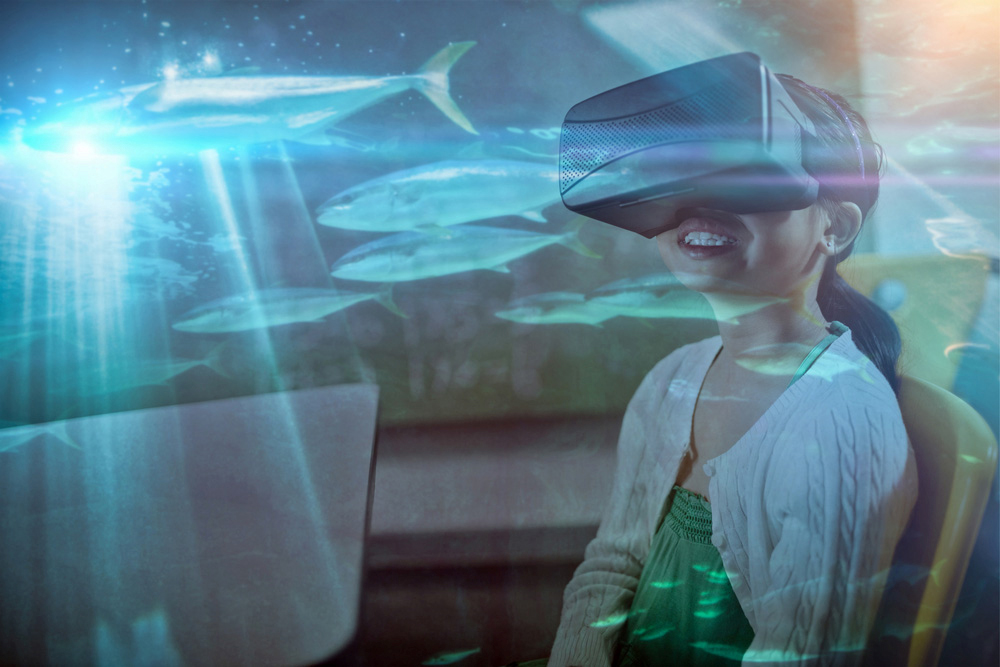
Innovation & Investment
Eight digital technologies disrupting aquaculture
Eight digital technologies are disrupting aquaculture and having a profound impact on the way business operates – even displacing some established ones.
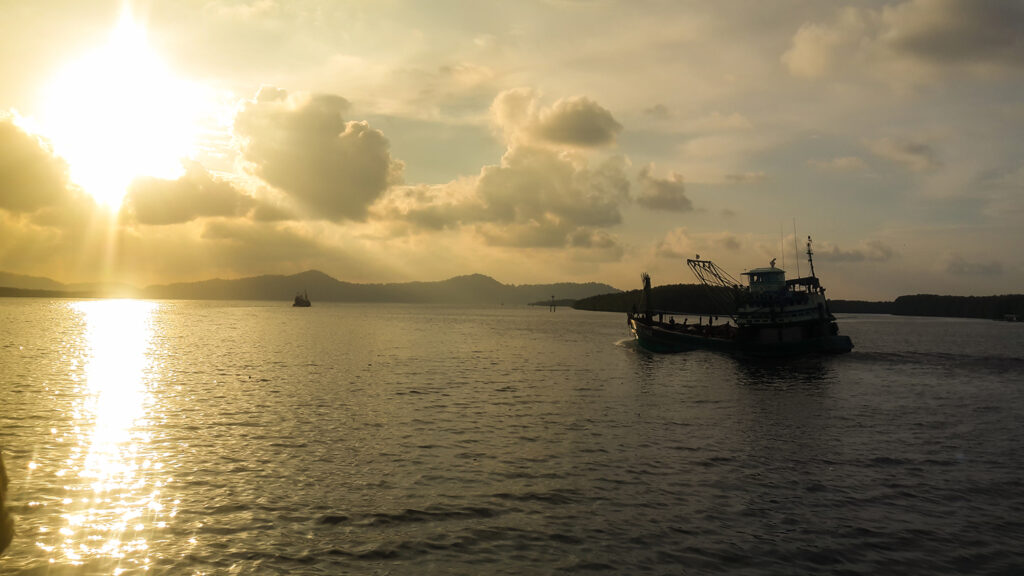
Fisheries
Can a data-sharing tool eliminate IUU fishing and make seafood supply chains more reliable?
The Sustainable Fisheries Partnership’s new data-sharing tool helps users identify environmental risks and eliminate IUU fishing in seafood supply chains.
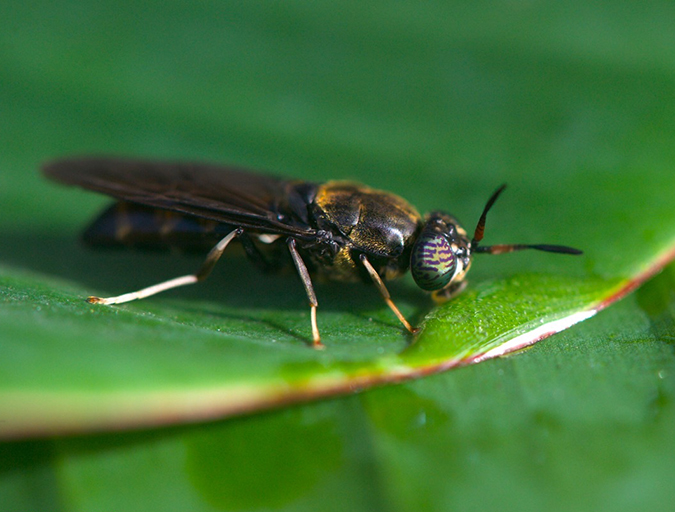
Aquafeeds
Buggin’ out: Tapping the potential of insect meal in aquaculture
Black soldier flies are gaining interest as a leading alternative ingredient in aquafeeds. But will the “ick” factor be a turn-off? Advocate contributor Clare Leschin-Hoar investigates.


